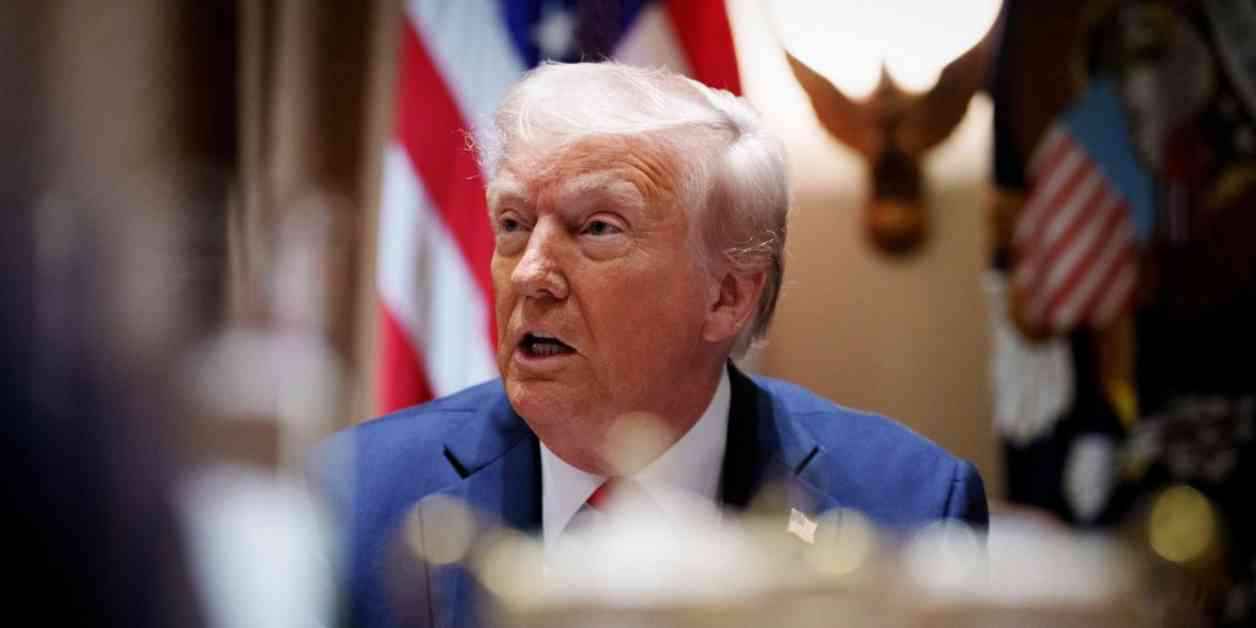President Donald Trump announced his intentions to impose tariffs on goods from Canada, Mexico, and China, adding a layer of complexity to the ongoing trade disputes. These measures, set to take effect soon, have stirred up the markets and raised concerns about their impact on the global economy.
The decision to implement 25% tariffs on imports from Canada and Mexico, along with an additional 10% on Chinese goods, comes amidst Trump’s efforts to combat the influx of illicit drugs into the United States. The President emphasized the necessity of these tariffs to protect the nation from the harmful effects of drug trafficking, stating that they would remain in place until the issue is adequately addressed.
Trump’s announcement of reciprocal tariffs on major trading partners, scheduled for April, has added to the uncertainty in the markets. The fluctuating nature of his tariff proposals has kept investors on edge, with major stock indexes experiencing volatility as a result of the shifting trade policies.
Conflicting Rationales and Unpredictability
Despite the initial proposal of tariffs on Canada and Mexico, the President later decided to suspend them for 30 days after claiming to have secured concessions from both nations. However, experts have questioned the significance of these concessions, suggesting that they may not be as substantial as portrayed.
The introduction of steel and aluminum tariffs, set to go into effect alongside the tariffs on Canada, Mexico, and China, further complicates the trade landscape. Trump’s omission of these duties in his recent social media post has raised questions about the coherence of his trade policy and the potential impact on various industries.
Moreover, Trump’s calls for tariffs on additional products such as autos, computer chips, and pharmaceuticals have added to the uncertainty surrounding trade relations. The White House’s indication that studies will be conducted to assess the repercussions of these reciprocal duties reflects the administration’s cautious approach to implementing tariff measures.
Market Reactions and Economic Uncertainty
While only a 10% duty on Chinese goods has been enacted thus far, the threat of escalating tariffs has already taken a toll on the markets and the economy. Analysts have highlighted the destabilizing effect of Trump’s tariff rhetoric, emphasizing the need for clarity and consistency in economic policy to mitigate uncertainty.
Capital Economics, a leading research and consultancy group, warned that the heightened uncertainty surrounding trade policies could dampen global investment and consumer spending. The group’s assessment aligns with concerns about the long-term impact of Trump’s tariff threats on the stability of the economy and international relations.
Trump’s assertion that the tariffs would generate revenue and address America’s budget deficit has sparked debates about the economic efficacy of such measures. While the President remains optimistic about the financial benefits of tariffs, the broader implications of these trade policies on the national and global economy remain subjects of intense scrutiny and debate.
In conclusion, Trump’s tariff announcements have injected a new level of complexity and uncertainty into the trade landscape, prompting reactions from various stakeholders and experts. The evolving nature of these measures underscores the need for a comprehensive and strategic approach to trade policy that balances economic interests with diplomatic considerations. As the situation continues to unfold, the implications of these tariffs on the markets, economy, and international relations will be closely monitored and analyzed to assess their long-term impact.


